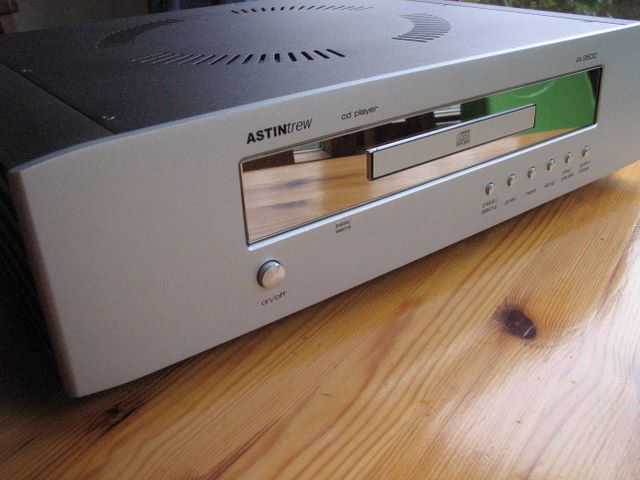In 2006, a new name entered the British hi-fi sector with the introduction of a modest line of mid-priced hi-fi separates. The best of these was the tube-buffered CD player, which sounded very different from its price competitors. It didn’t take the Astin Trew AT3500 long to develop a cult following. With UK design overseen by founder Michael Osborne and manufactured in China, this £1,150 machine was absolutely of its time – in a world of relatively explicit and bracing sounding silver disc spinners, this one epitomized the move towards a warmer and more rounded sound. Indeed, for the price, it sounded like nothing else, being smooth and nearly euphonic in its presentation.
It was a good, robust design from a technical standpoint, but nothing extraordinary. The transport consisted of a thick aluminium base plate with compliant anti-resonance dampening, which was isolated from the main casework by the Phillips VAM1202 mech and CD711 servo. The pricey ‘C core’ transformer powered a Burr Brown PCM1738 DAC with independent power sources for each sector. The ECC88 double triode valve was then utilized to buffer the output. The chassis was a lavish, anodised aluminium affair, and inside it sported a high performance clock with dedicated power supply; a Class A biased analogue output stage was used and a number of expensive passive components including Auricap capacitors were specified.
It was a big machine, measuring 430x340x110mm and weighing 9.1kg. The appealing venting on the case top, as well as graceful heatsinking around the sides, matched the clean front panel. With flush-mounted hex-head fixings and excellent gunmetal/titanium paintwork, it seemed a neat looking machine at the time. The downside was the rather crude fluorescent display set behind a mirrored fascia, which looked a little gaudy and didn’t convey information as elegantly as some. The upsampling button, which is rated at 24bit/96kHz, is the only frontal control of mentioning.
A Plus option was offered for a premium of £220, which bought you extra case damping and improved internal cabling from the DAC board to the buffer amp and the buffer amp to the output, replaced with the highest quality pure copper. A new, old stock Philips JAN (Joint Army Navy) valve, which ended manufacture about 1963, was installed in place of the normal Electro Harmonix EC88 buffer valve.
The AT3500 was a wonderful machine that won multiple group testing in 2007 and 2008, thanks to its incredibly smooth and melodious sound. It lacked low-level detail, but its great tonality made it extremely popular with valve lovers; for a brief period, it was the de rigeur CD spinner to be seen with at hi-fi exhibits, particularly for manufacturers whose products were centered around the tube sound. It was also quite good rhythmically, able to convey a more unified sense of the music’s phrasing than many competitors, who sounded sterile in comparison.
It was a sweet-sounding device, but when the £1,300 AT3500+ arrived a year or two later, we realized there was still more to come; the Plus version was syrupy-sweet, especially when the Upsampling button was engaged. The treble was silky smooth, the midrange was smooth and sensitive, and the bass was full and thick. The only drawbacks were that the machine sounded a little coloured and opaque when compared to competitors such as the Cyrus CD8, that the treble was a little constricted, and that the bass wasn’t the tightest or tautest around.
These days, the second-hand market makes the Astin Trew relatively affordable, although it is still holding its value well simply because it remains something of a cult object. It’s a hi-fi flag of digital disobedience that identifies you as someone who knows exactly what they want and understands why it’s not available on popular devices. It’s still worth a look – and a fantastic secondhand bargain – with a nice reliable mech and decent spares support. The AT3500 is still available new, but most people paying £1,500 or so for a digital source nowadays want full DAC functionality, which the Astin Trew simply doesn’t have. That’s the main thing that makes it seem old; the sound doesn’t.







